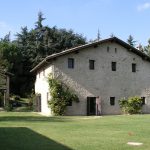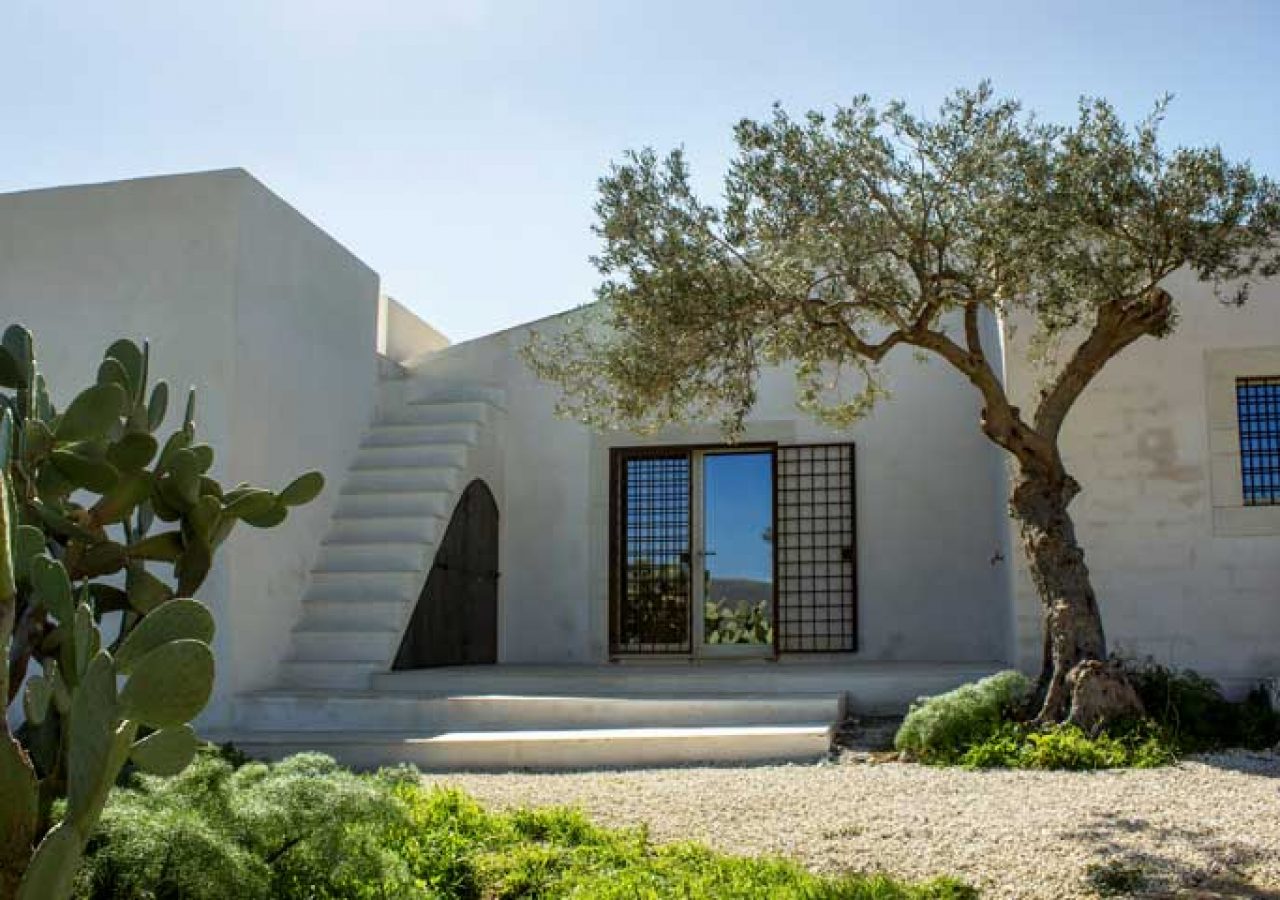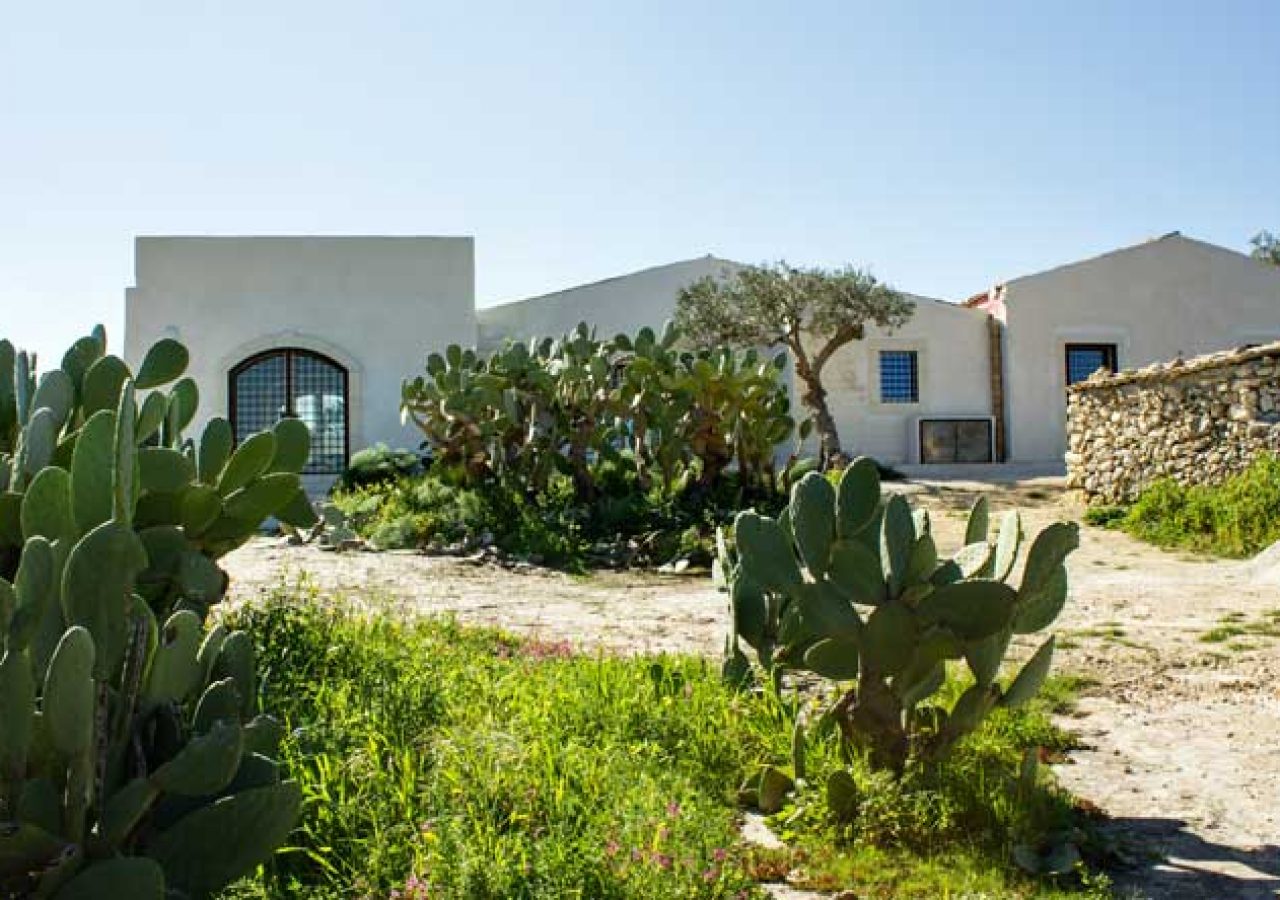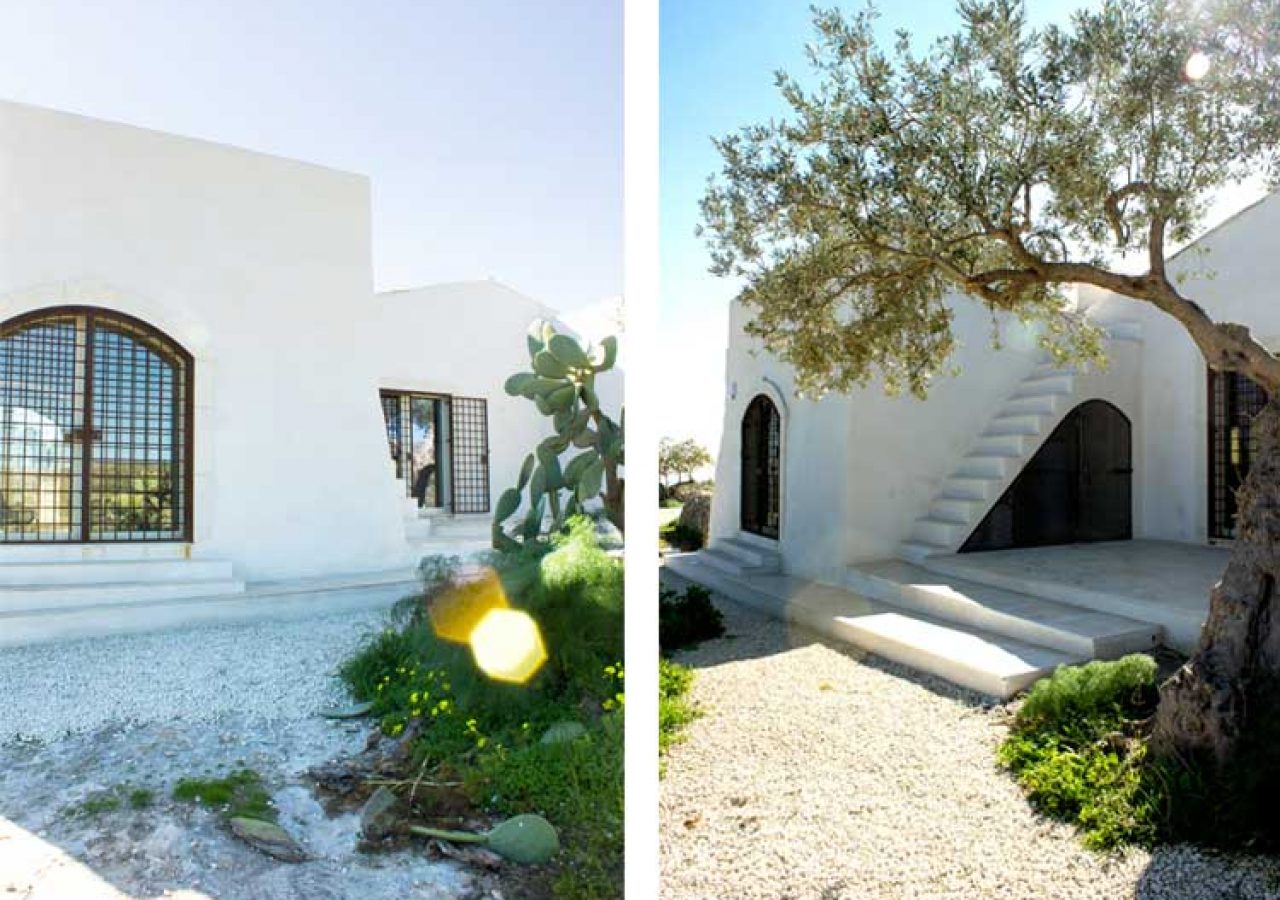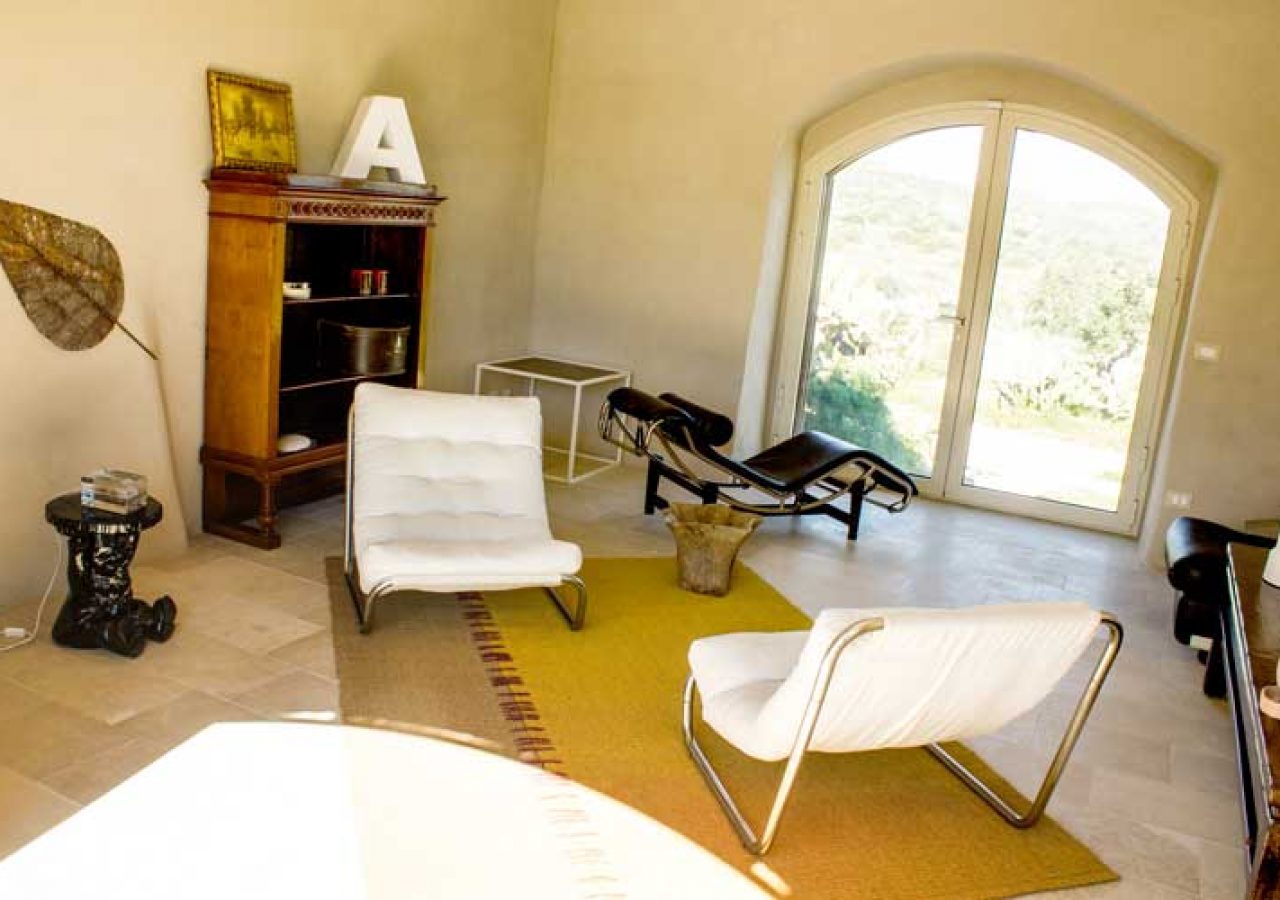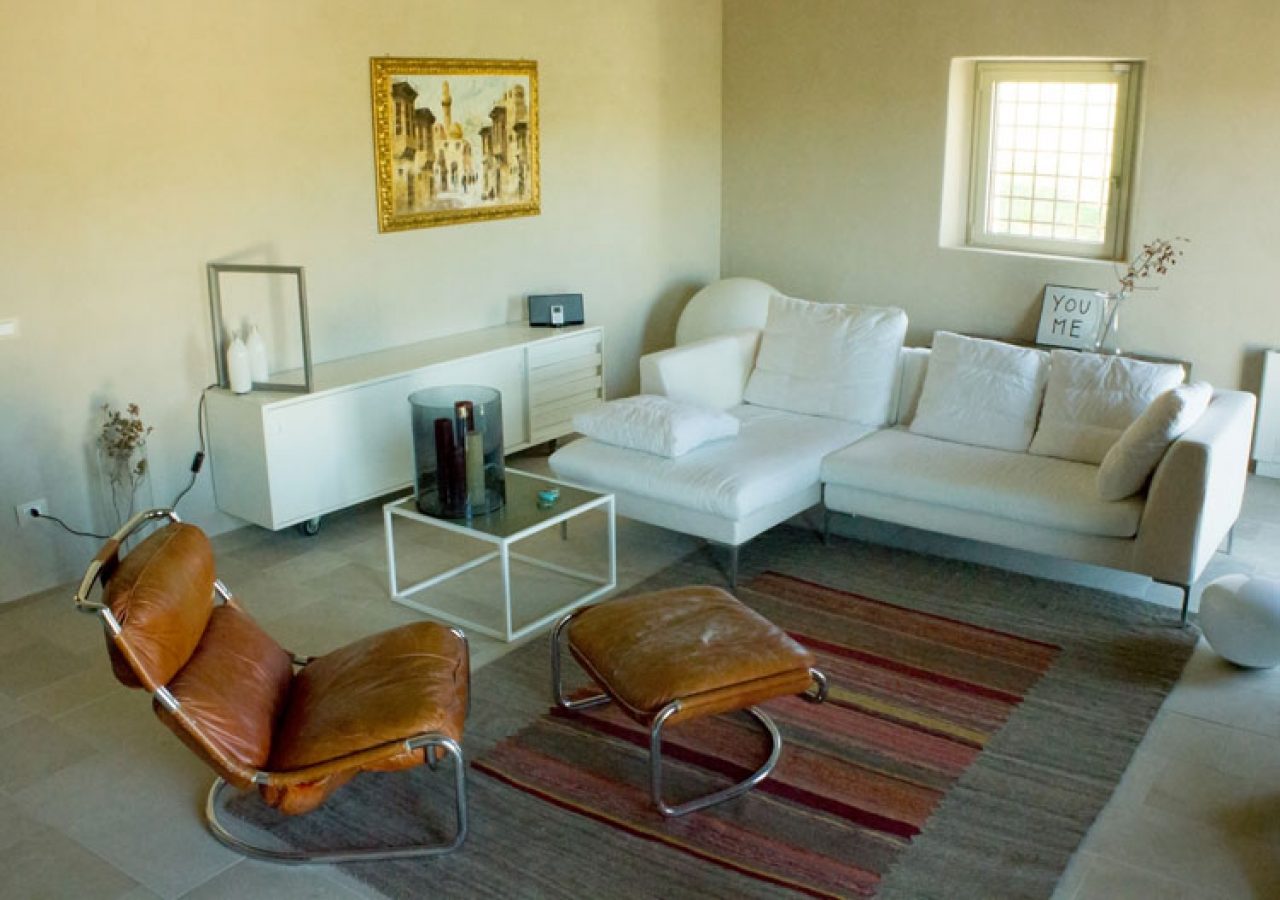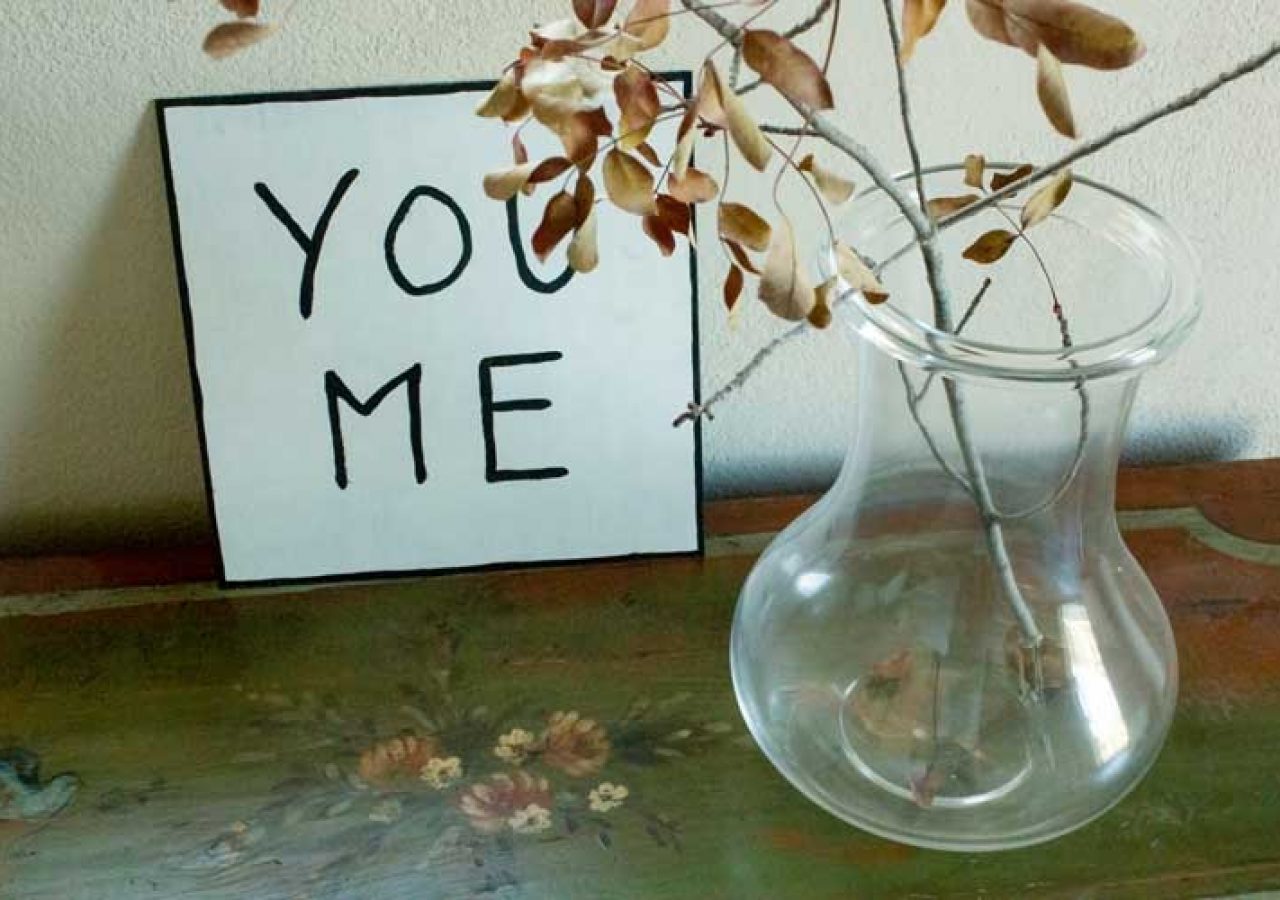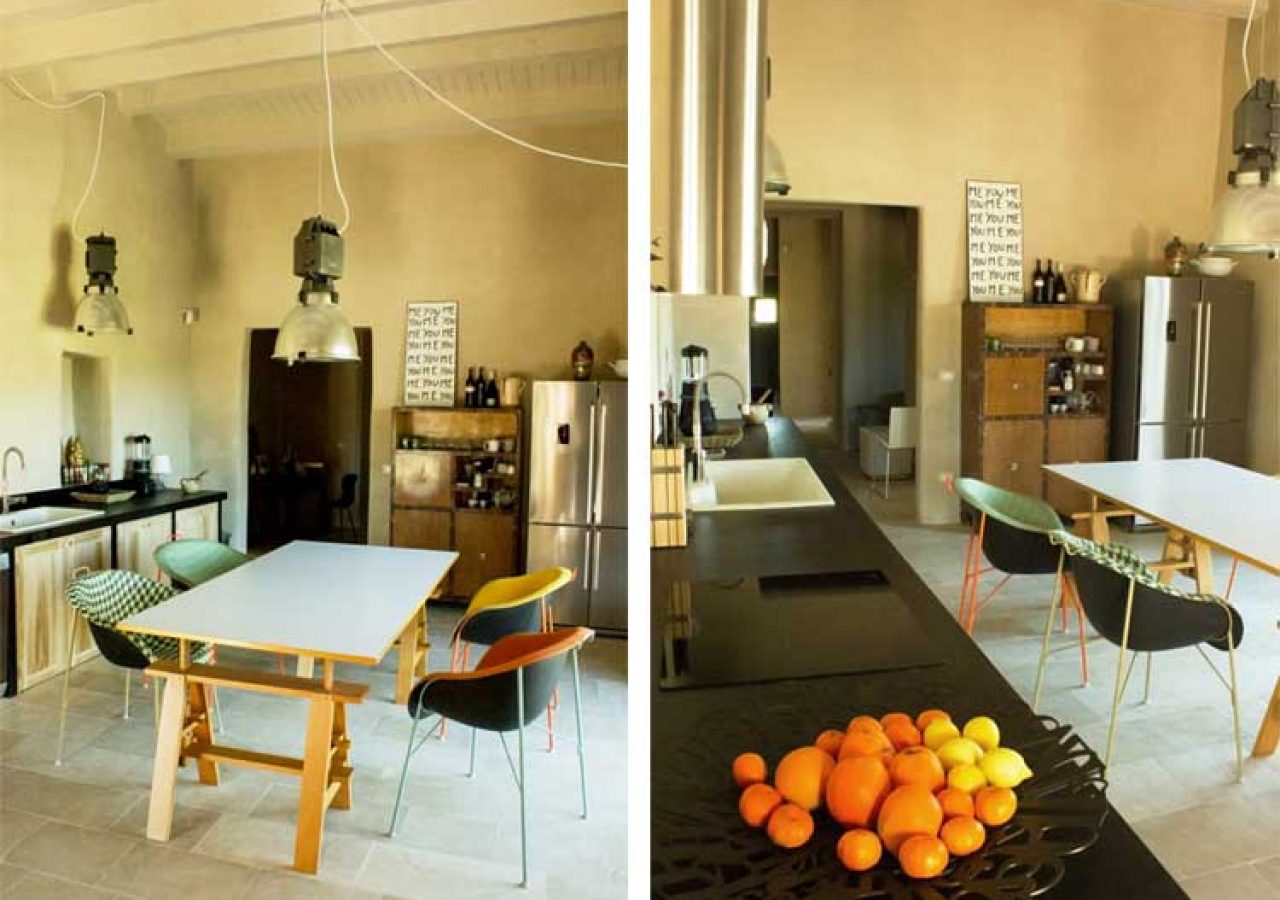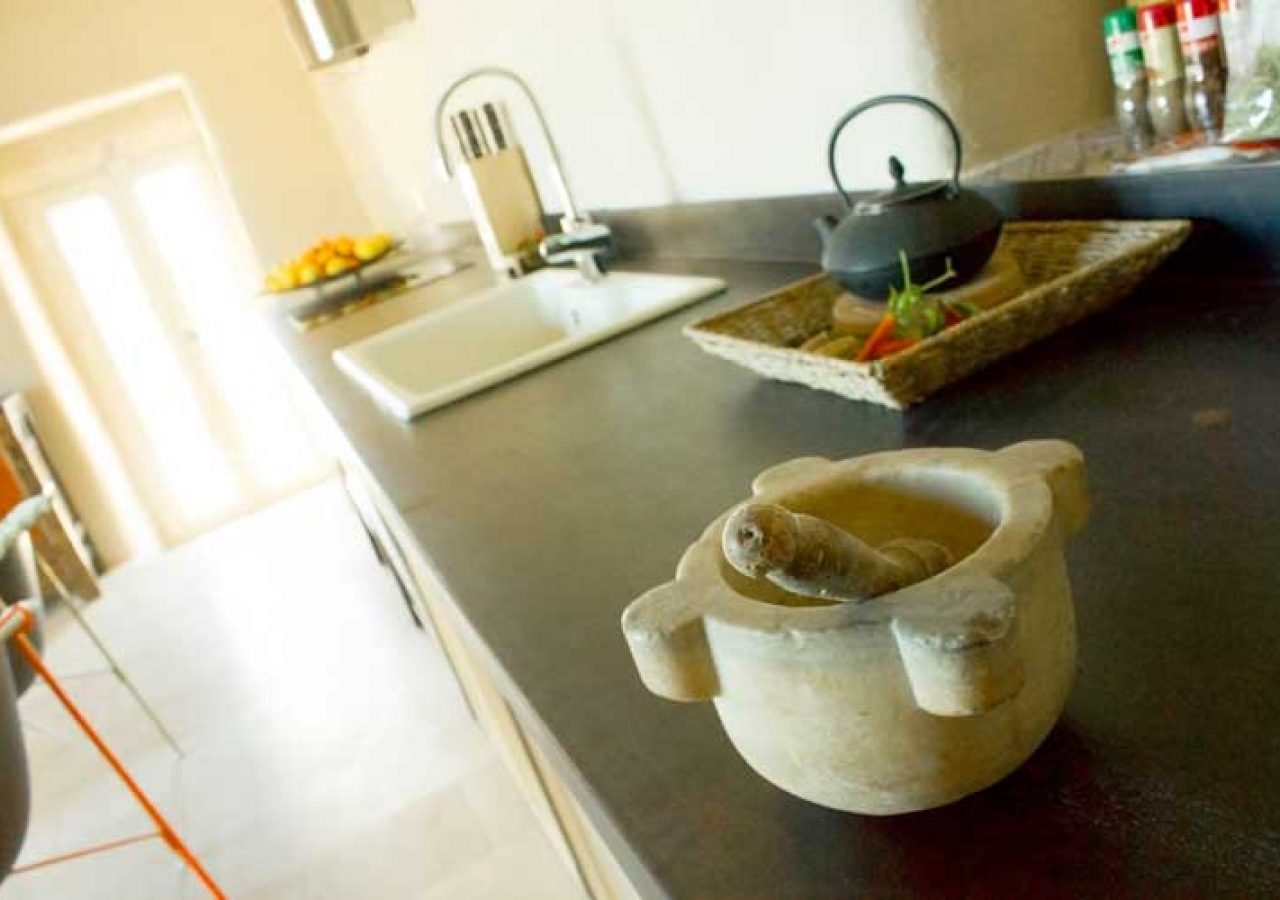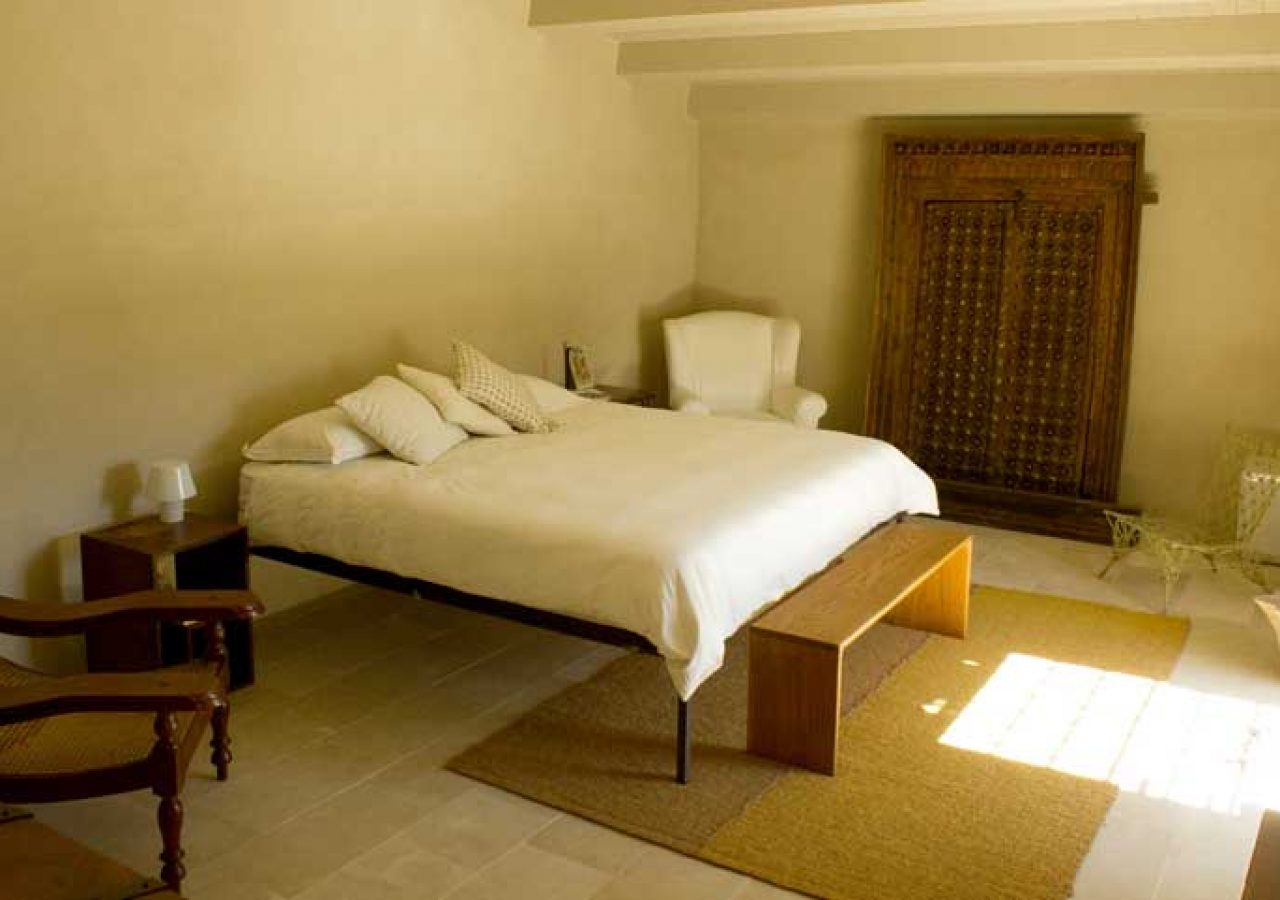A BALCONY ON THE BAROQUE
A 19th-century farmhouse in the countryside near NOTO,
from which to view the Baroque city and the sea of VENDICARI,
has been restored as a vacation home without betraying
the historical identity and the territorial spirit.
In love with Sicily, and in particular with the southeastern part, the cradle of the Baroque,
an architect from Emilia operating on the international design scene started to look for a
vacation home several years ago, a refuge immersed in the most authentic atmosphere
of the island.
He found what he was looking for in a 19th-century farmhouse in the country near Noto,
the capital of Sicilian Baroque, protected by UNESCO heritage listing.
The rural complex in the greenery, amidst olive, carob and almond trees, is located by one
of the typical canyons that mark the territory of the Vallo di Noto, overlooking the nature
reserve of Vendicari. The old masseria is composed of an original nucleus, joined in the first
decades of the 20th century by some new volumes to create new spaces for the family living
there at the time. The new proprietor has restored the complex in a conservative way,
keeping its structural and stylistic characteristics intact, and making a clear historical
interpretation while changing some of the functional roles of the spaces.
The arrangement of the volumes and rooms has been preserved, though in the old carriage
house a living area has been inserted, and the roof now features a terrace accessed by way
of an external staircase (offering a view as far as Portopalo di Capo Passero);
the space for sheep, detached from the main structure, is now a small guesthouse.
The original walls in stone, lime and sand have been given new cladding and then covered
with hydrated lime and whitewash, maintaining the natural characteristics.
Insulation from the ground (the building has no foundations) has been done with aerated slabs,
while natural climate control for the rooms is provided by ventilated roofing.
The floors are in Modica stone, a calcareous local rock with a luminous beige color, both inside
and outside the building. In this sober natural setting an eclectic selection of furnishings has been
assembled that leaves little room for local taste, shifting towards personal passions and travel
souvenirs of the owner. In the rooms, seats and upholstered furniture with metal tubing from the
1970s coexist with oriental armchairs, antique Indian doors attached to the wall like paintings, and
famous pieces by Zanotta, Cassina, Poltrona Frau, as well as iGuzzini work lamps, custom
furnishings (the kitchen, for example) in natural iron and wood, and northern European cabinets
from the 1960s. A small legacy of memories and passions, put together over the years and
gathered in a home for leisure time, inspiration, encounters and healthy detachment from
everyday frenzy. The house stands at the center of a rural estate of 25 hectares, containing
hundreds of olive, carob and almond trees. In particular, an almond grove of about one hectare,
planted long ago and surrounded by a stone wall with a square perimeter, has been entirely
cleaned up, replacing the dead trees and reconstructing the enclosure. The conservation of the
territorial heritage and the rural landscape goes hand in hand with the restoration of the buildings,
seeing the two dimensions as part of a whole, in keeping with the tradition and spirit of the place.



